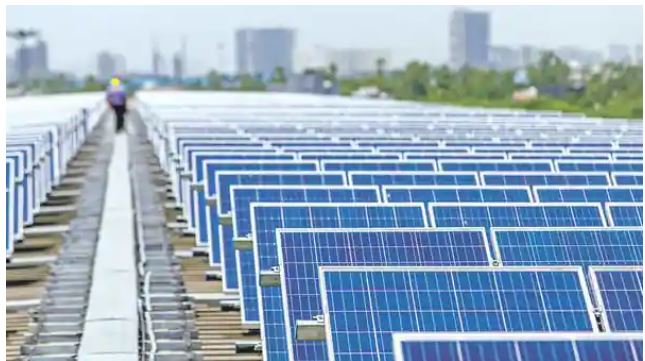News Highlights
India has achieved clean energy targets 9 years before the deadline’.
Key Takeaways
- India has installed 162 GW of renewable energy capacity, which is 41% of the 402 GW of electricity installed.
Renewable energy targets of India
- 40% from renewable by 2030
- As part of its Nationally Determined Contributions, India pledged in 2015 to make sure that by 2030, 40% of its energy would come from renewable sources.
- 50% of its energy requirements from renewable energy by 2030
- At the COP26 Summit in Glasgow, India pledged to increase the nation’s non-fossil energy capacity to 500 GW and fulfill half of its energy needs with renewable sources by 2030.
India’s renewable energy plan
- Renewable energy comes from natural sources that replace themselves more quickly than they are used up, such as solar energy, wind energy, etc..
Why Renewable Energy?
- Less pollution.
- The fossil fuels emit a lot of pollution into the atmosphere, which destabilizes atmospheric gas concentration.
- Potentiality
- India being a tropical country, it has an enormous source of renewable energy sources, such as solar insolation, and wind.
- Employment generation.
- Increased employment options for the nation’s working population simply result from the inclusion of newer technology, for instance, solar panel maintenance.
- Growing demand for energy.
- India’s population is rising and the standard of living is also improving.
- Sustainable source
- Renewable energy will produce cleaner, more environment friendly, and long-lasting energy.
Challenges
- High initial cost
- The initial cost for harnessing renewable energy is high compared to non-renewable sources of energy.
- Connectivity to the Main Grid
- India has to focus on integrating renewable energy with the main grid.
- Interrupted supply
- The inputs to produce renewable energy, such as solar insolation and wind, change from season to season.
- Growing demand.
- Growing demand for energy resources also poses a threat.
Government Initiatives
- International Solar Alliance
- It is a collaborative, member-driven, action-oriented platform for expanding the use of solar energy technologies.
- Intended Nationally Determined Contributions (INDCs)
- India has pledged to improve the emissions intensity of its GDP by 33 to 35 per cent by 2030 below 2005 levels
- National Solar mission
- It is to promote solar power in India
- Net Zero by 2070
- India’s Prime Minister Narendra Modi declared during COP-26 that the country would have net-zero carbon emissions by 2070.
Way forward
- Incentivize consumers
- Incentivize consumers to use renewable energy sources.
- E.g. Subsidy for electric vehicles.
- Strengthening international cooperation.
- Strengthening international cooperation to streamline inputs for the production of renewable energy sources.
- Agriculture subsidies
- In order to make sure that only the necessary amount of energy is spent, agricultural subsidies should be rationalize.
- Enhance R&D expenses
- It would help to improve domestic production of renewable energy components and technology.
- Skill development
- A proper skill development should be imparted to meet the growing human resource demand.
Pic Courtesy: The Hindu
Content Source: The Hindu



